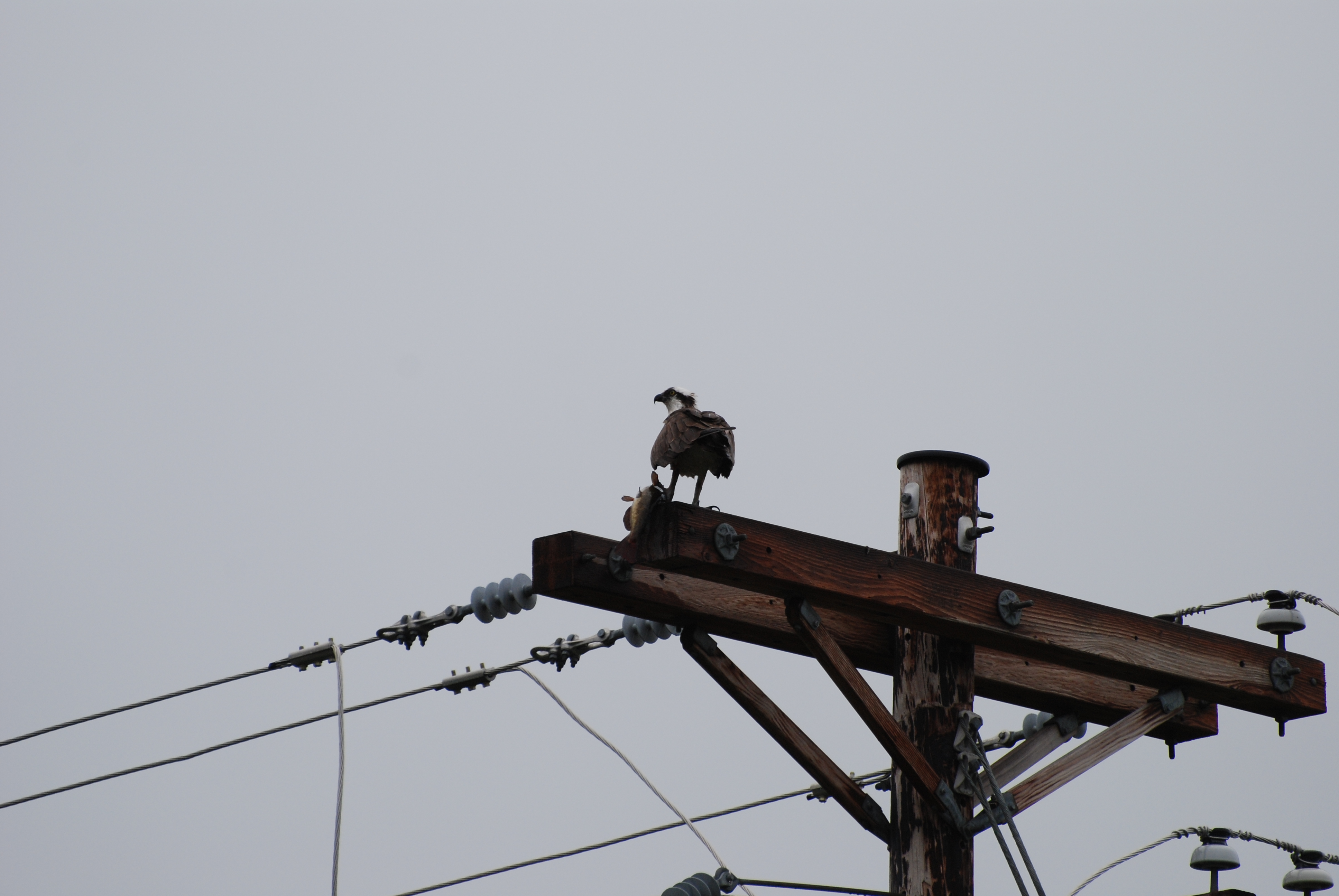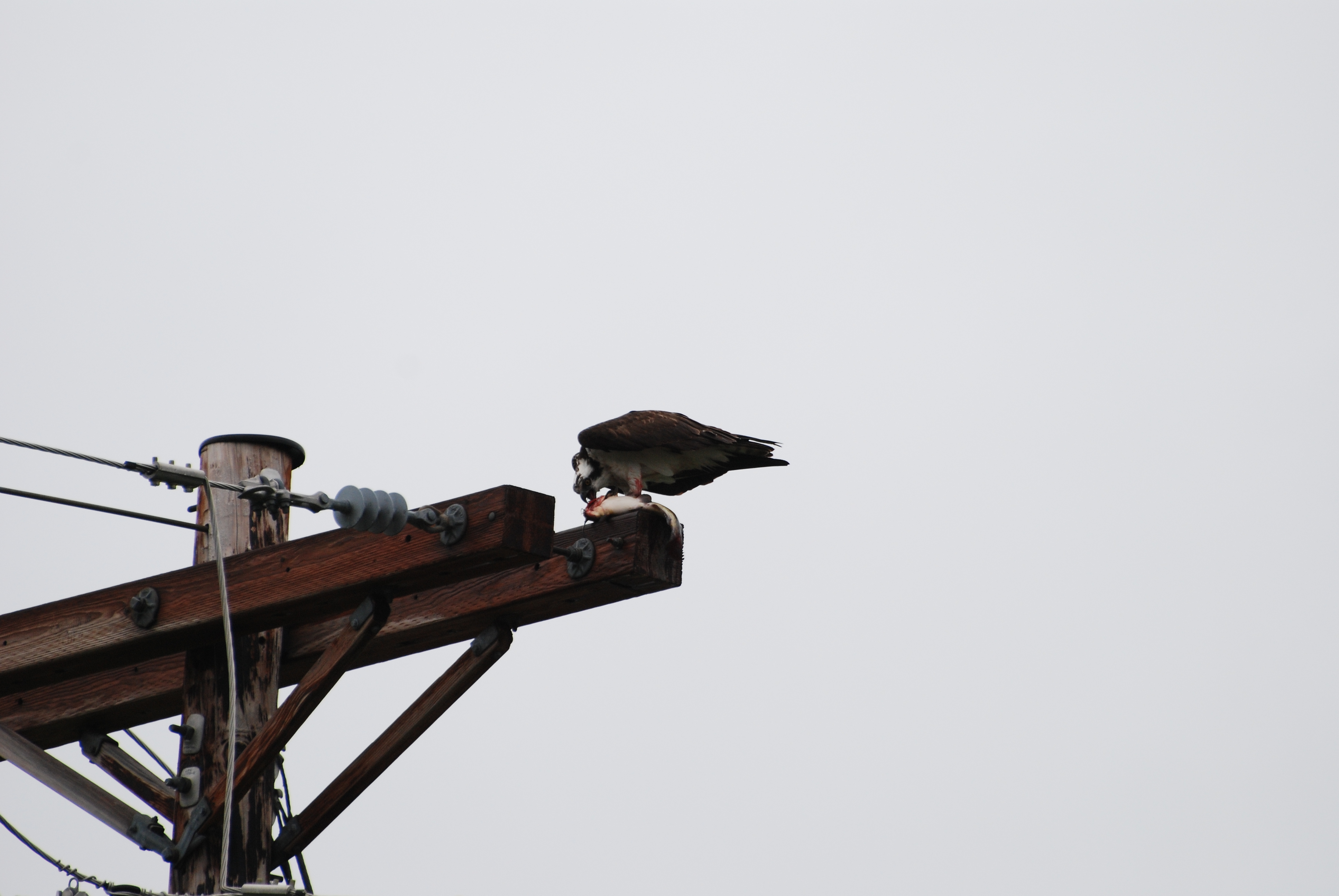Channel Catfish (Ictalurus punctatus) on Jun 1, 2008
Submitter does not have a specimen
Description of specimen
I watched an Osprey feeding on what looked like a Channel Catfish. The bird was sitting on a power power pole. I am not positive where it got the fish. I saw the Osprey flying west above the lake to the south of NE Glisan St. with a fish almost to heavy for it to carry. It landed on the power pole and I took pictures. When I got home I realized the fish had barbels and thought I'd send you a picture.



If it is an invasive, has it been reported before?
Thanks
Reporter
June 1, 2008, 5:51 a.m.
Here's some additional information about them:
Catfish are unique among the introduced fishes of Oregon and are easily distinguished from other kinds by the smooth scaleless bodies, the fleshly barbells or "whiskers" on the head and chin, and the strong, sharp sine in the dorsal and each pectoral fin.
In general, catfish are nest builders with the exception of the channel and flathead catfish which prefer undercut banks, overhanging rocks, hollow logs, or other similar places to deposit their eggs.
Spawning occurs in early summer when water temperatures reach about 70 to 80 degrees. The eggs are deposited in gelatinous masses and will number from 2,000 to 15,000 per female, depending on size.
Young bullheads are herded about in schools by the parents for several weeks after hatching. By the end of the first growing season the young fish reach lengths of two to four inches. they mature in their third or fourth year of life.
In good waters, catfish are taken weighing two to four pounds or more depending upon the species. In over-crowded waters the fish are much smaller and stunting usually occurs if waters are too cold or food supplies are inadequate.
The true catfish can readily be identified from the more common bullhead catfish. Here in Oregon, the channel catfish is the only member of the family which has a deeply forked tail. The color is silver-gray with numerous black spots over the body. The flathead catfish is similar to the channel catfish, but does not have the deeply forked tail or black spotting. The flathead is found only in the Snake River.
The bullhead catfish are more difficult for the average fisherman to identify as to species. In general, however, the yellow bullhead is the only member with white or cream-colored barbells or "whiskers" under the chin, and has a pronounced rounded tail. The black and the brown bullhead are the most difficult to tell apart as the colors are similar, and they both have dark or blackish barbells and squarish or slightly rounded tails. Normally, they can be differentiated by the presence of a light colored bar at the junction of the tail and body on the black bullhead. The brown bullhead lacks this light bar on the tail section.
Lisa DeBruyckere
June 8, 2008, 7:02 a.m.